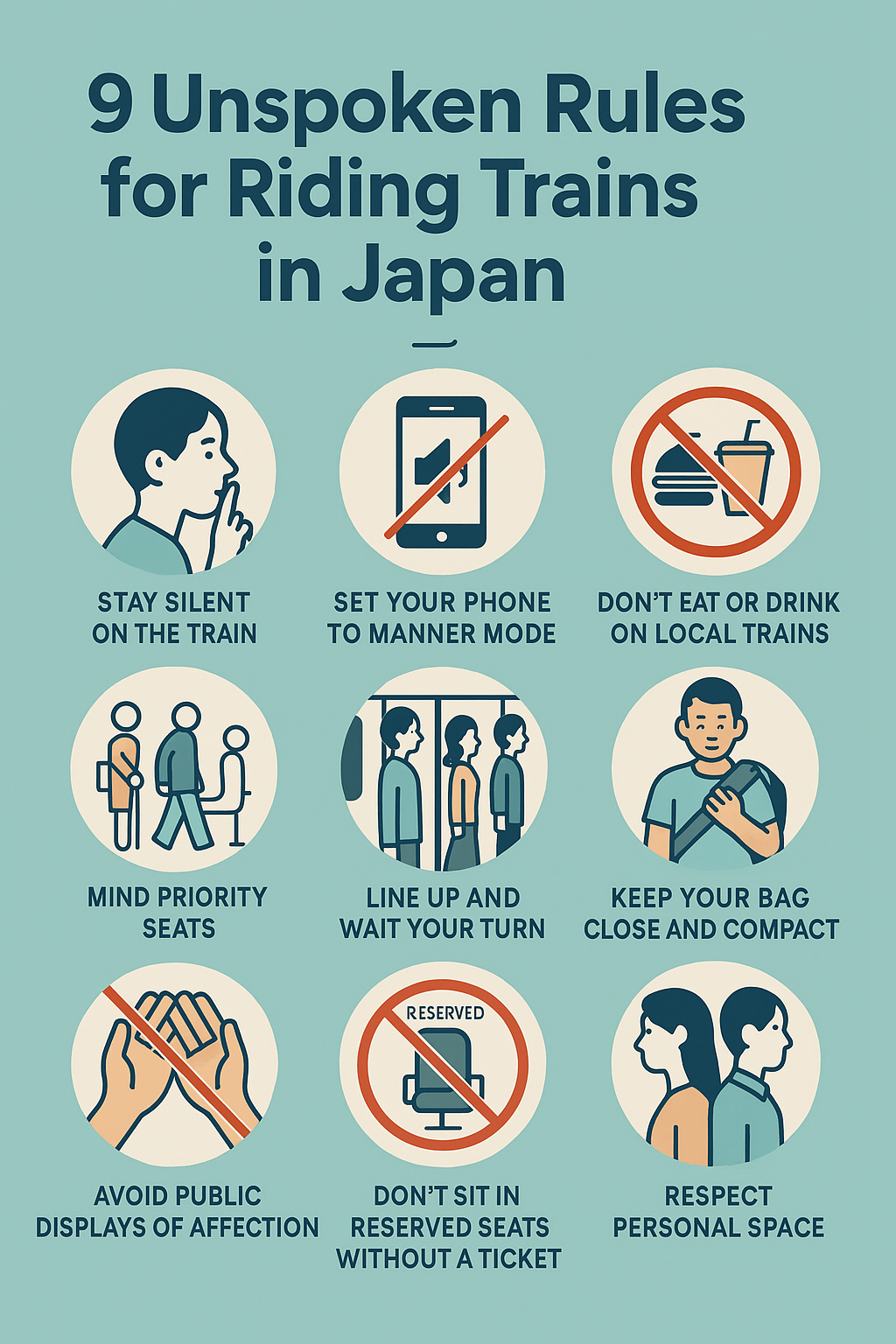🚉 Introduction
Trains are the lifeline of Japan.
From bullet trains slicing through the countryside to crowded commuter lines in Tokyo, Japan’s rail system is admired worldwide for its speed, cleanliness, and punctuality.
But there’s another side to this efficiency—an unspoken code of conduct that locals follow without question.
If you’re planning a trip to Japan, understanding these silent rules can save you from uncomfortable stares—or worse, accidental rudeness.
Here are 9 must-know train rules in Japan that will help you blend in and ride with confidence.
1. 🔇 Silence Is Golden: No Phone Calls
Talking on the phone inside trains is strongly frowned upon.
Even a short call can disturb the peace, and announcements often remind passengers to switch phones to silent mode.
Near priority seats, phones should be turned off completely to avoid interfering with medical devices like pacemakers.
2. 🗣 Speak Softly—or Not at All
While conversations aren’t banned, loud voices are discouraged.
Japanese passengers value peace and quiet, especially during commutes. Keep conversations brief and hushed.
Many travelers use this time to read, nap, or scroll quietly through their phones.
3. 🎒 Hold Bags Correctly
Backpacks should be worn on the front or taken off completely in crowded trains.
Placing them on the floor between your legs or on the overhead rack is best.
Don’t let your bag take up extra seats—this is considered inconsiderate.
4. 🚪 Let People Off First
It may seem obvious, but it’s often ignored by first-time visitors: Always allow people to exit before boarding.
Stand to the side of the doors and wait until everyone is off.
It’s polite and helps trains run efficiently.
5. 🧓 Respect Priority Seating
Priority seats, often marked in a different color, are for seniors, pregnant women, people with disabilities, and passengers with injuries.
If you’re sitting in one, stay alert and offer your seat when necessary—even if the train isn’t crowded.
6. 🧳 Avoid Eating or Drinking (Unless on a Bullet Train)
In local trains, eating and drinking are considered bad manners.
A quick sip of water is fine, but no smelly food or snacks, especially during rush hours.
However, eating on long-distance trains like the shinkansen is not only accepted but part of the travel experience—bento boxes are sold at stations for this purpose!
7. 🧍♀️ Move Away from the Doors
Don’t stand right in front of the doors unless you’re getting off at the next stop.
Standing there blocks others from exiting or boarding, especially during busy times.
Move to the center of the train when possible.
8. 📏 Line Up and Be Patient
Japanese stations have markings that show where to wait. Passengers form neat lines and wait for the train to arrive—no cutting, no rushing.
People board in order, usually from both sides after passengers get off. It’s all about flow and courtesy.
9. 💡 Bonus: No Loud Music or Videos
Using your phone or tablet without headphones is a big no-no.
Always use earphones, and even then, keep the volume low to avoid sound leakage.
Silence is appreciated more than you might expect.
🌸 Conclusion
Japanese trains are more than just a way to get from A to B—they’re a part of Japan’s cultural identity.
Following these unwritten but widely respected rules shows respect for the local way of life and makes your journey more enjoyable.
By blending in with proper etiquette, you’ll not only avoid discomfort—you’ll gain deeper appreciation for the quiet beauty of Japanese public transportation.



コメント